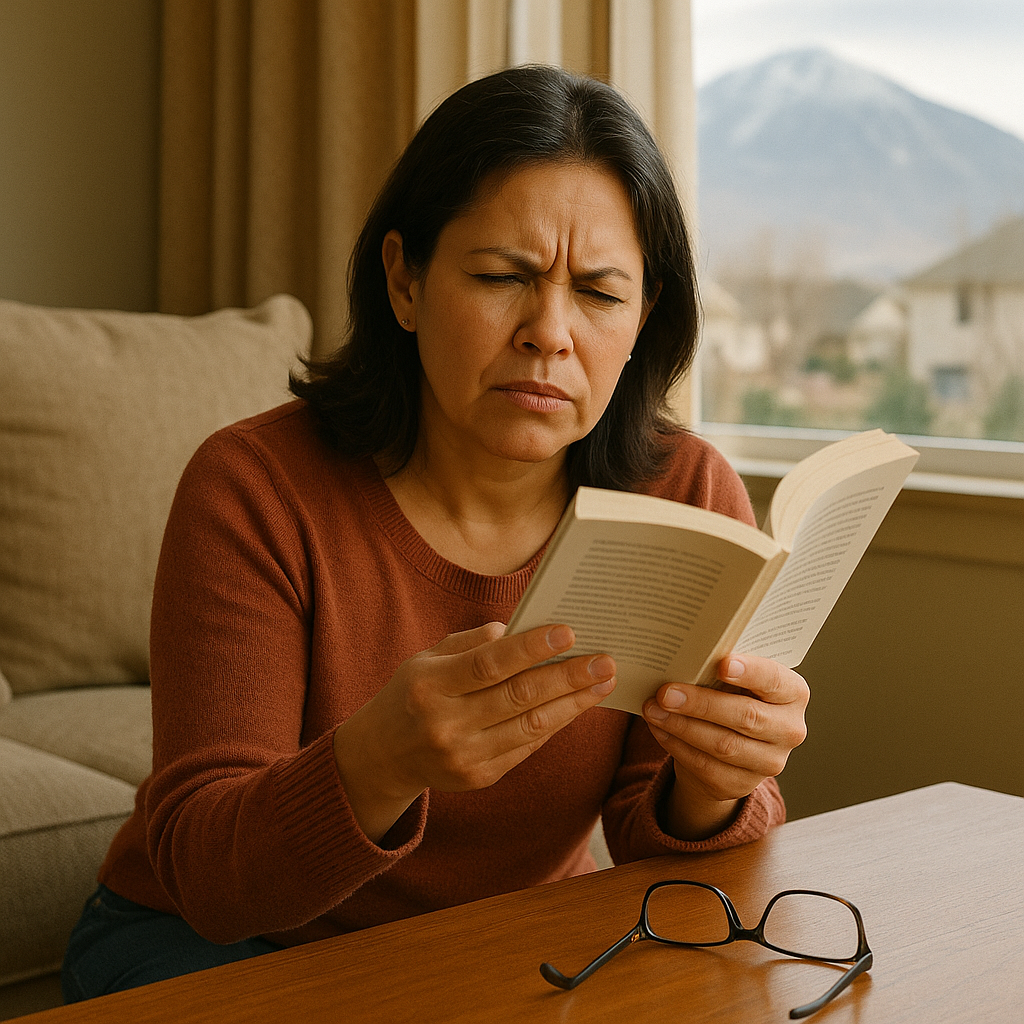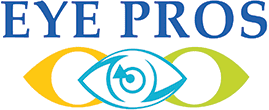Is It Time for Reading Glasses? Early Signs for Spanish Fork Adults

If you’ve started holding your phone a little farther away or squinting to read a menu at your favorite Spanish Fork café, you’re not alone. Around age 40, many adults begin to notice subtle but frustrating changes in their near vision. It’s a normal part of aging and one of the clearest early signs that it might be time for reading glasses. Presbyopia, the age-related loss of near focusing ability, affects nearly everyone eventually. And while it may sound like a big shift, recognizing the symptoms early can help you adjust with confidence and clarity. At Eye Pros in Spanish Fork, we help adults spot the signs of presbyopia early and find the right solution—whether that’s over-the-counter readers, prescription glasses, or other customized options. If you’re wondering whether your eyes are just tired—or if you really do need reading glasses—this guide will help you decide. What Is Presbyopia—and Why Does It Happen? Presbyopia is a common, age-related vision condition that makes it harder to focus on things up close. It usually begins to show up in your early to mid-40s, even if you’ve never worn glasses before. If you’ve found yourself holding reading materials at arm’s length or needing brighter light to see small print, presbyopia is likely the reason. So what’s actually happening? As we age, the lens inside the eye gradually becomes less flexible. When that flexibility decreases, your eye can’t adjust as easily to focus on nearby objects—especially in low lighting or after a long day of screen use. This isn’t a disease, and it doesn’t mean anything is “wrong” with your eyes—it’s simply a natural part of getting older. While reading glasses are one of the most common ways to manage presbyopia, they’re not the only option. The key is recognizing the signs early and working with a trusted eye doctor—like the team at Eye Pros in Spanish Fork—to find the best solution for your lifestyle. Early Signs You May Need Reading Glasses Presbyopia doesn’t happen overnight—it creeps in slowly, and many adults don’t realize what’s going on until the frustration builds. If you’ve started noticing any of these changes in your day-to-day routine, it might be time to consider reading glasses: You hold books, phones, or menus farther away to bring text into focus. You need more light than usual to read comfortably, especially in dim settings. Small print looks blurry up close, but distant objects are still clear. You get frequent headaches or eye strain after reading or using a screen. You find yourself squinting to see details up close—even with perfect distance vision. Reading feels more tiring than it used to, and you lose focus more quickly. These symptoms are subtle at first, but they often become more disruptive over time. If any of them sound familiar, don’t wait for things to get worse. A quick visit to an eye doctor can confirm whether reading glasses are the right solution—or if another option would suit you better. We make it easy to get clear answers and personalized recommendations—so you can stop guessing and start seeing comfortably again. Are Reading Glasses My Only Option? Reading glasses are the most common solution for presbyopia—but they’re far from the only one. Depending on your lifestyle, vision needs, and whether you already wear glasses or contact lenses, there are several options available to help you see clearly up close. Here’s a quick breakdown of the most popular choices: Over-the-Counter Readers: Affordable and easy to find, these work well for mild, occasional use—but they don’t correct differences between your eyes or provide a custom fit. Prescription Reading Glasses: Designed specifically for your eyes, these offer sharper vision and better comfort, especially if one eye is stronger than the other. Bifocals and Progressive Lenses: Ideal for people who need help seeing both near and far, these combine multiple prescriptions in one lens—no need to switch between glasses. Multifocal Contact Lenses: If you prefer not to wear glasses at all, these contacts provide clear vision at multiple distances, including reading. Monovision Contacts: One eye is corrected for distance, the other for near—an option some people adapt to easily with guidance from their eye doctor. Choosing the right solution depends on how you use your vision every day—whether you’re reading books, working at a screen, or driving. That’s why a personalized eye exam is the best way to explore your options and make a decision that fits your lifestyle. Why Regular Eye Exams Still Matter Even if you’ve started using reading glasses, that doesn’t mean your vision journey is on autopilot. As your eyes continue to change over time, regular eye exams play a key role in keeping your sight sharp and your eyes healthy—especially after age 40. Presbyopia isn’t the only concern as we get older. An annual exam can also detect early signs of other eye conditions like glaucoma, cataracts, or macular degeneration—many of which develop silently before noticeable symptoms appear. A professional eye doctor can also ensure that your reading correction is accurate and comfortable. If your drugstore readers aren’t doing the trick anymore or if you’re switching glasses constantly, it might be time for a custom prescription that fits your specific needs. Your vision is constantly evolving. A yearly eye exam is the best way to keep pace with those changes and protect your long-term eye health with confidence and clarity. FAQs About Reading Glasses & Age-Related Vision How do I know what strength reading glasses to get? The right strength depends on your age, vision needs, and whether you already wear corrective lenses. Many people start with +1.00 to +1.50 diopters in their early 40s, but a proper eye exam is the most accurate way to determine the correct strength—especially if your eyes have different needs. What is the use of reading glasses? Reading glasses are designed to help you see clearly up close. They correct presbyopia, a natural condition that makes it harder to focus on near objects as you age. Whether you’re reading
